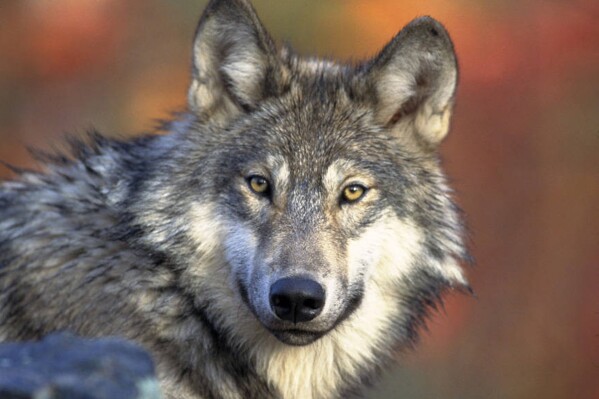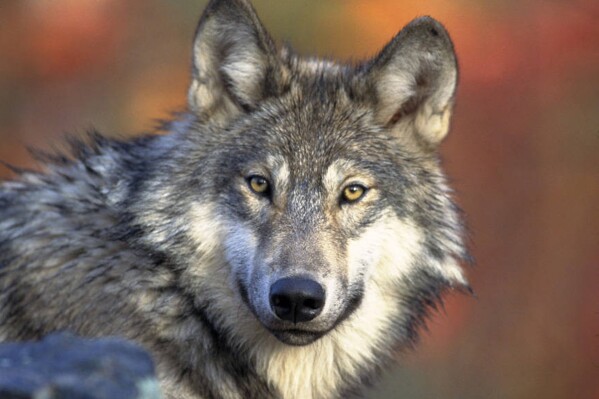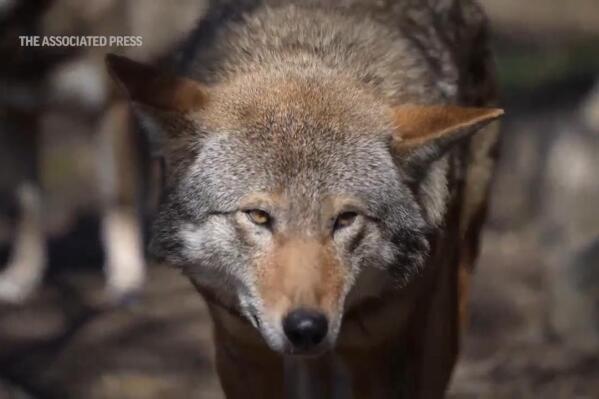A board leader calls the new Wisconsin wolf plan key to removing federal protections for the animal
MADISON, Wis. (AP) — The leader of the Wisconsin Department of Natural Resources policy board signaled support Wednesday for the department’s contentious new wolf management plan even though the document lacks a hard population cap that hunters and farmers have demanded.
Board Chairperson Bill Smith said during a meeting in Manitowish Waters that the plan shows the state is committed to maintaining a viable wolf population. That will help the state push federal wildlife officials to remove wolves from the endangered species list, a process known as delisting. The state would then gain management authority, enabling the DNR to resume hunting seasons and empowering farmers to kill wolves preying on livestock, he said.
“To me, it’s (the new plan) an absolute foundation piece in getting delisting, getting state authority of wolves and maintaining and sustaining a healthy program,” Smith said. “No matter how good the plan is, if we can’t get delisting, and we can’t get state authority, a vast majority of the plan is going to be very difficult to impossible to implement. We’re not going to have the tools to manage the population.”
Wolf management has become one of the nastiest policy debates in Wisconsin outdoor circles over the last 30 years. Animal rights advocates have applauded the animal’s resurgence in the state as a conservation success story. But farmers in northern Wisconsin say they’re tired of wolves threatening their cattle and hunters are eager to go after the animals.
 Wisconsin DNR defends lack of population goal in wolf management plan
Wisconsin DNR defends lack of population goal in wolf management plan
 Wisconsin wolf hunters face tighter regulations under new permanent rules
Wisconsin wolf hunters face tighter regulations under new permanent rules
 Takeaways from AP’s reporting on efforts to restore endangered red wolves to the wild
Takeaways from AP’s reporting on efforts to restore endangered red wolves to the wild
The DNR adopted a management plan in 1999 that calls for limiting the population to 350 animals. The latest DNR estimates, though, put the population at around 1,000 animals. The agency uses a combination of winter tracking, monitoring radio-collared wolves, reported sightings and modeling to estimate the population.
Republican legislators passed a law in 2011 that mandates an annual wolf hunt. Hunters and farmers have pointed to the 350 number as justification for setting high kill quotas.
A federal judge last year placed gray wolves in the lower 48 states back on the endangered species list, making hunting illegal and limiting farmers to nonlethal control methods, such as fencing in livestock or guard dogs.
The DNR has been working to update its management plan in case wolves are delisted and hunting resumes in the state. The new plan recommends a statewide population of about 1,000 animals but doesn’t set a hard limit on the population. Instead, the plan recommends allowing the population to grow or decline at certain numerical thresholds. DNR officials insist the plan creates flexibility in dealing with local packs, allowing for more hunting pressure in areas overpopulated with wolves.
The proposal has met with sharp criticism from farmers and hunters who want to see a specific statewide population goal. The Wisconsin Farm Bureau Federation, the largest farmers association in the state, has called for maintaining the 350-wolf cap and Republican lawmakers are advancing a bill that would force the DNR to insert a specific number in the plan.
The board is expected to vote on the new plan Oct. 25. All seven members of the board were appointed by Democratic Gov. Tony Evers and lean liberal.
Smith asked the DNR’s large carnivore specialist Larry Johnson during Wednesday’s meeting to speculate on how a 350-animal cap would go over with federal wildlife officials as they consider delisting. Johnson said such a move would probably be seen as a “red flag” about the state’s commitment to maintaining a sustainable wolf population.
Board members Jim VandenBrook and Marcy West echoed Smith. VandenBrook said the plan provides a more nuanced approach to wolf management. West said it’s not fair to keep wolves on the endangered species list when they’ve clearly recovered and other species need more attention.
“We’re not going to make everybody happy,” West said. “But we have to do these things to move forward. We’re done with the past.”
Disclaimer: The copyright of this article belongs to the original author. Reposting this article is solely for the purpose of information dissemination and does not constitute any investment advice. If there is any infringement, please contact us immediately. We will make corrections or deletions as necessary. Thank you.


